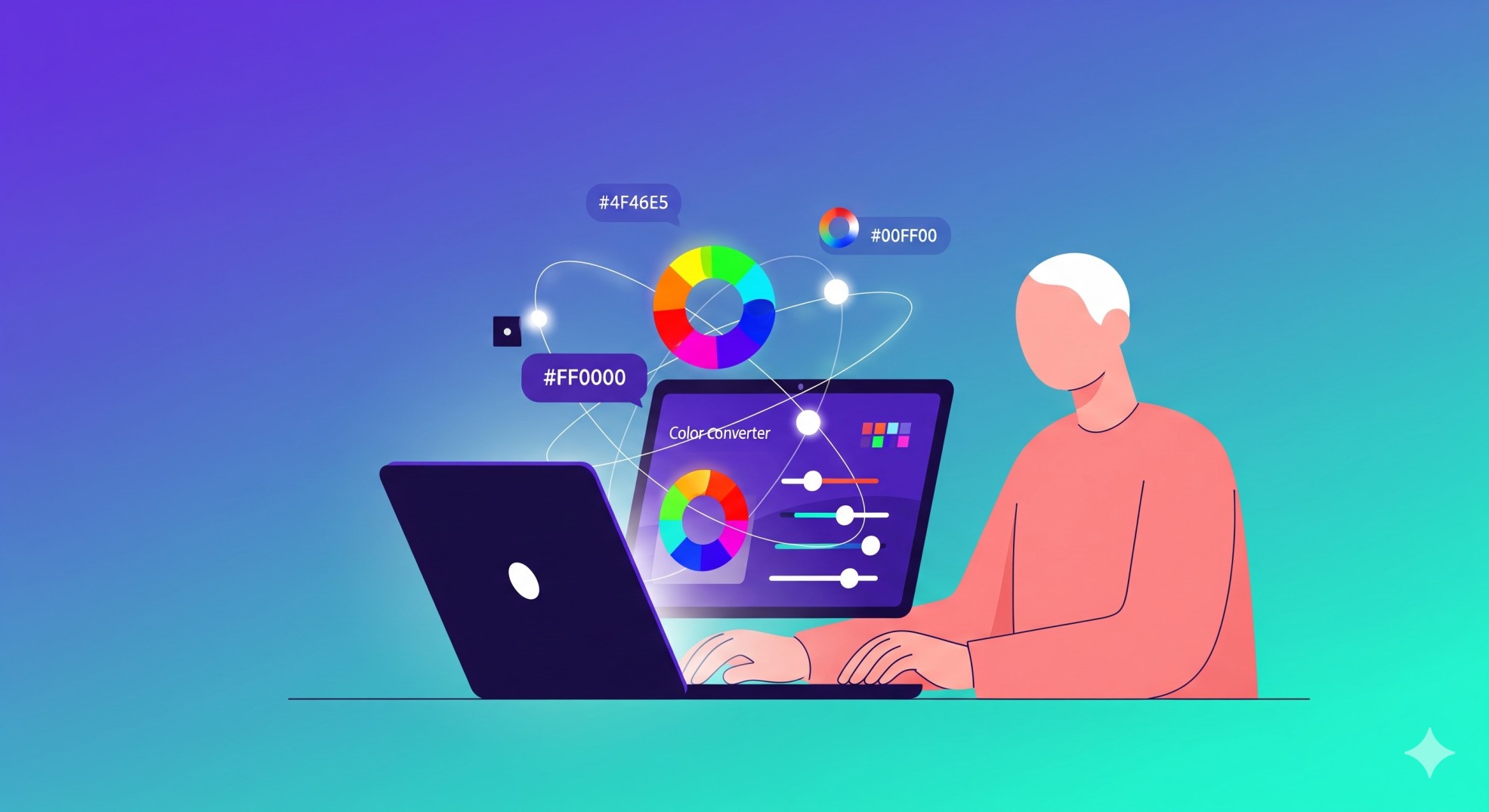Color is the lifeblood of the digital world. It sets the mood, guides the user's eye, and defines a brand's identity. But behind every beautiful color on your screen lies a code—a string of letters and numbers like #E5464F or hsl(357, 78%, 59%).
For new designers, developers, and marketers, these codes can seem cryptic and confusing. Why are there so many different formats? What's the difference between HEX and RGB? And what does the "A" in RGBA even mean?
Understanding these core concepts is crucial for creating consistent, beautiful, and functional designs. This guide will demystify the most common web color codes and show you how to work with them effortlessly.
Decoding the Core Web Color Models
Different color models exist because they represent colors in different ways, each with its own advantages. Let's break down the ones you'll encounter most often.
HEX (Hexadecimal)
This is the most common color code you'll see in web design.
- What it is: A six-digit alphanumeric code preceded by a hash (
#). It represents the intensity of Red, Green, and Blue (#RRGGBB). - Example:
#FFFFFFis pure white (maximum of all three colors), while#000000is pure black (minimum of all three). A vibrant red might be#FF0000. - Best for: General web design and development. It's compact and universally supported.
RGB & RGBA (Red, Green, Blue, Alpha)
This model is a more direct representation of how screens produce color.
- What it is: It defines a color by the intensity of Red, Green, and Blue, with each value ranging from
0to255. - Example: The same vibrant red would be
rgb(255, 0, 0). - What is RGBA? The "A" stands for Alpha, which controls transparency. It's a value from
0.0(completely transparent) to1.0(completely opaque). This is something standard HEX codes cannot do. - Example with transparency:
rgba(255, 0, 0, 0.5)is the same red, but at 50% transparency.
HSL & HSLA (Hue, Saturation, Lightness, Alpha)
This is the most intuitive model for the human brain. Instead of mixing light, you adjust color attributes.
- What it is:
- Hue: The pure color itself, represented as a degree on the color wheel (
0to360). - Saturation: The intensity or "vibrancy" of the color (
0%to100%). - Lightness: How light or dark the color is (
0%is black,100%is white). - Why it's useful: It makes it incredibly easy to create color variations. Need a slightly darker shade of your brand's blue for a button border? Just decrease the Lightness value by 10%.
- HSLA: Just like RGBA, the "A" adds a channel for transparency (
0.0to1.0).
The Bridge Between Codes: The Abbas Studio Color Converter
So, what do you do when a client gives you a HEX code, but you need an RGBA value to add transparency for a hover effect? Or when you want to find complementary colors using the HSL model?
You need a fast and reliable way to translate between them.
The Color Converter Suite on Abbas Studio is designed for this exact purpose. It's a single, powerful tool where you can enter a color in any format and instantly get its equivalent in all the others.
No more manual calculations or guesswork. Just seamless, accurate conversions.
Practical Example: Creating a Transparent Overlay
Let's see it in action. Imagine your brand's primary color is a nice purple with the HEX code #8B5CF6. You want to create a semi-transparent overlay using this color.
- Go to the Abbas Studio Color Converter.
- Enter
#8B5CF6into the HEX input field. - The tool instantly shows you the RGB equivalent:
rgb(139, 92, 246). - To make it 70% transparent, you simply create the RGBA value:
rgba(139, 92, 246, 0.7).
In seconds, you've translated your solid brand color into a transparent version ready for your CSS.
Design with Color Confidence
Understanding web color codes empowers you to take full control of your designs. Knowing how and when to use HEX, RGBA, and HSL will elevate your work, and having the right tool makes the process effortless.
